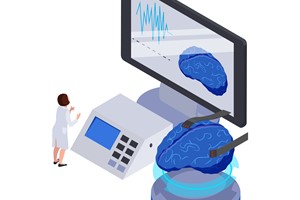Wearing a phototherapy device that emits near-infrared light is associated with potential therapeutic benefits for sleep and daytime functioning, according to a new study to be presented at the SLEEP 2023 annual meeting.
Results show that self-reported, sleep-related symptoms improved after three weeks of treatment. Participants in the active treatment group reported experiencing better sleep quality, feeling more refreshed and relaxed, and functioning better during the day.
This novel phototherapy device -; while still being explored and in need of further research -; appeared to be generally well-tolerated by a small group of participants. Those with active, light-emitting devices -; as opposed to the inert sham devices -; self-reported an increase in relaxation and better sleep with use."
Kathryn Kennedy, lead author, doctoral candidate, department of psychiatry, University of Arizona in Tucson
According to the authors, transdermal delivery of near-infrared light exhibits several therapeutic properties, including increased relaxation, likely through stimulation of parasympathetic activity. However, the benefits of near-infrared light delivery for sleep and next-day daytime functioning have been unexplored.
The five-week, randomized, sham-controlled study involved 30 adults between the ages of 30 and 60 years. Each participant reported having sleep complaints but did not have a sleep disorder. After a two-week baseline period, participants wore a cervical collar every other night before bed for three weeks. For those in the active treatment group, the collar emitted near-infrared light, and for those in the sham treatment group, the collar was inactive. Participants completed questionnaires about physical symptoms and insomnia severity, and they provided daily ratings of measures such as sleep quality, perceived changes to sleep, feeling refreshed, relaxation, and daytime functioning. Results were compared between groups.
Kennedy noted that while there are many sleep trackers in the marketplace, there are few wearable devices targeted at improving sleep and next-day performance, making near-infrared light an intriguing candidate with potential to become a novel treatment for sub-clinical sleep complaints.
"Given the emerging field of photo biomodulation and its potential neuroprotective and vasodilating effects, this red-light and near-infrared emitting device may be useful if milliwatt power level, dosage, and frequency of use are refined," she said.
The research abstract was published recently in an online supplement of the journal Sleep and will be presented Tuesday, June 6, during SLEEP 2023 in Indianapolis. SLEEP is the annual meeting of the Associated Professional Sleep Societies, a joint venture of the American Academy of Sleep Medicine and the Sleep Research Society.
Source: American Academy of Sleep Medicine
Reviewed by Megan Craig, M.Sc.
Editor for News Medical










